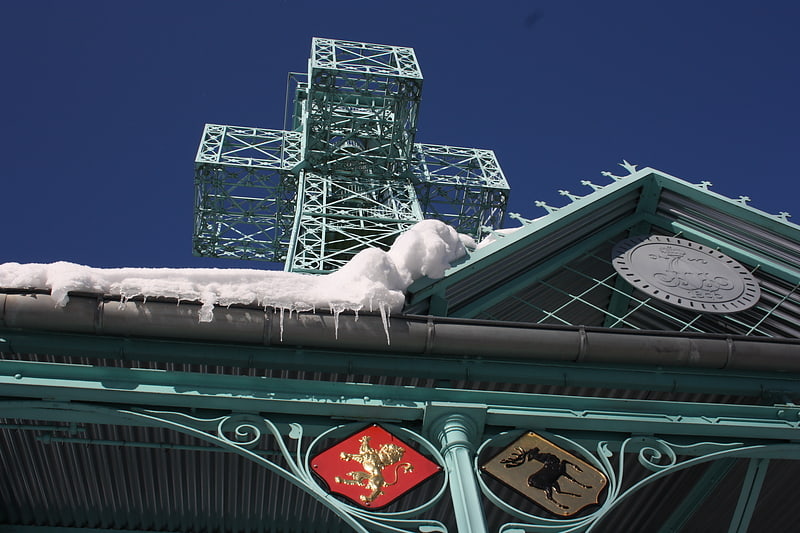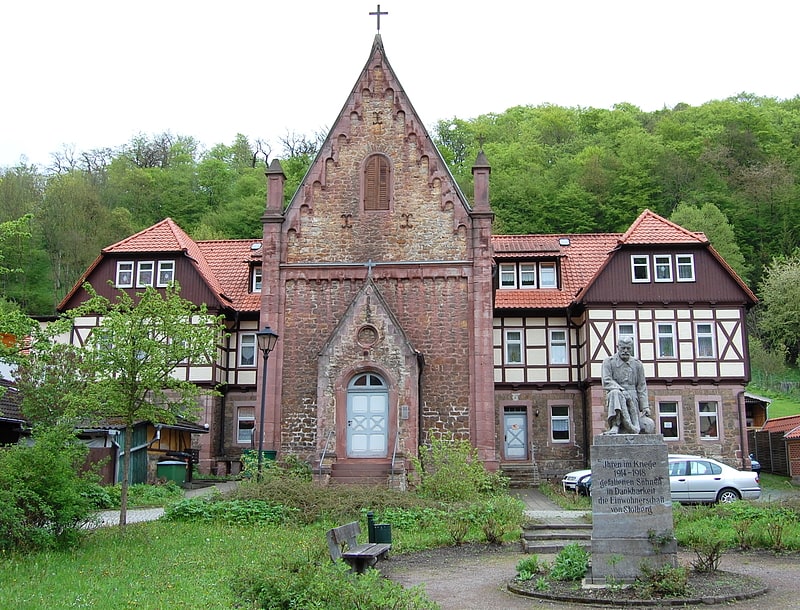Discover 6 hidden attractions, cool sights, and unusual things to do in Stolberg (Germany). Don't miss out on these must-see attractions: Joseph Cross Tower, Stolberg Castle, and Old Mint. Also, be sure to include Hunrodeiche in your itinerary.
Below, you can find the list of the most amazing places you should visit in Stolberg (Saxony-Anhalt).
Table of Contents
Joseph Cross Tower

Also known as: Josephskreuz
Tower in Südharz, Germany. The Joseph Cross is an observation tower in form of a double cross on the 580-metre-high Großer Auerberg near Stolberg, Germany. The Joseph Cross is a steel framework construction with a height of 38 metres and a weight of 125 tons, which was built between 20 April 1896 and 9 August 1896. The Joseph Cross was closed for visitors from 1987 to 1990, before being refurbished and reopened.[1]
Address: Grosser Auerberg, 06536 Mansfeld
Stolberg Castle

Also known as: Schloss Stolberg
Castle in Südharz. Stolberg Castle is a palace in the town of Stolberg in the Harz Mountains of Germany. It dates to the 13th century and stands above the town on a hill with steep drops on three sides. Since 2003 it has been completely restored and renovated by the German Foundation for Monument Conservation.[2]
Address: Schlossberg 1, 06536 Stolberg
Old Mint

Also known as: Alte Münze
Museum in Südharz, Germany. The Old Mint is a protected timber-framed house in the town of Stolberg in the German state of Saxony-Anhalt. The building houses the Old Mint Museum. It is located at No. 19, Niedergasse.[3]
Address: Niedergasse 19, 06536 Stolberg
Hunrodeiche

The Hunrodeiche or, more rarely, the Hunrodseiche, in the Harz Mountains of central Germany is an oak tree over 1,000 years old near Hainfeld in the county of Mansfeld-Südharz in the state of Saxony-Anhalt.[4]
St. Georg Hospitalkapelle

Saint George's Chapel is a Protestant chapel in Stolberg, Saxony-Anhalt, Germany. It is located in the Niedergasse.
Juliana 1506

Juliana, Countess of Stolberg-Wernigerode was the mother of William the Silent, the leader of the successful Dutch Revolt against the Spanish in the 16th century.
Juliana was born in Stolberg as the daughter of Bodo VIII, Count of Stolberg-Wernigerode and Anna of Eppstein-Königstein. She was raised a Roman Catholic but changed her religion twice, first to Lutheranism and later to Calvinism. She, along with her second husband, was a convinced Protestant and raised their children in the Protestant ways. After the death of her second husband in 1559 she remained living at Dillenburg castle, now belonging to her second son John, where she died in 1580.
Her entire life, she kept close to her children, especially William. When William began his rebellion against Philip II of Spain she supported her son morally and financially. Because of this financial support, William was able to campaign against Spain in the Netherlands.
A fictionalized account of her life is found in Ethel Herr, Dr. Oma: The Healing Wisdom of Countess Juliana Von Stolberg (P&R Publishing, 2006).[5]